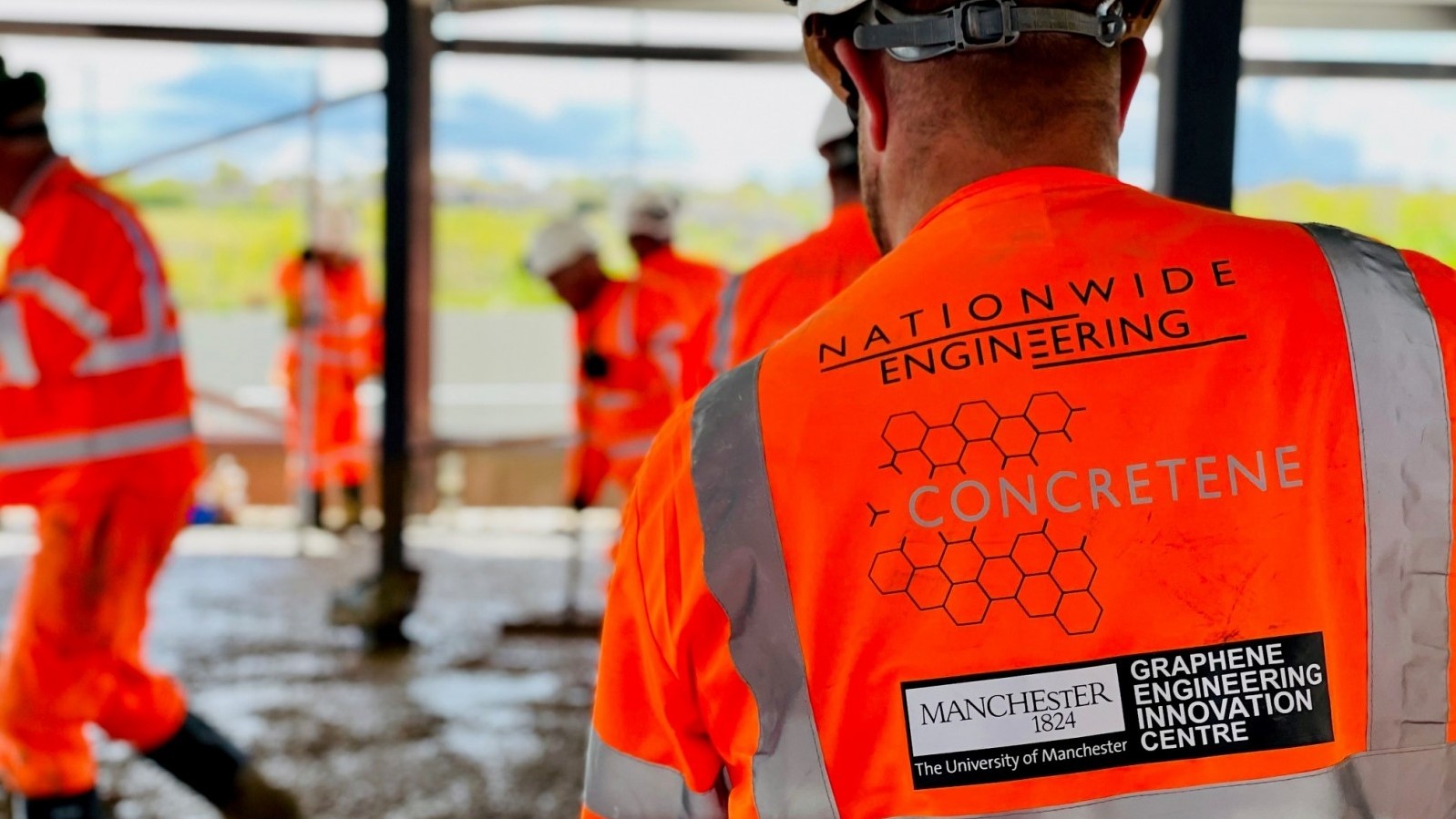
Graphene-enhanced concrete has been used to lay the floor slab of a new gym in Amesbury, Wiltshire, in what its developers claim is a world first.
‘Concretene’, produced in joint venture between the University of Manchester and alumni-led construction firm Nationwide Engineering, requires 30% less material and removes all steel reinforcement. Nationwide Engineering has estimated that it could offer a saving of 10%-20% to its customers, depending on the size of the project.
The addition of small amounts of graphene – made of a single layer of carbon atoms – strengthens Concretene by around 30% compared to standard RC30 concrete, according to the University of Manchester, meaning that less is required to achieve the equivalent structural performance.
Liquid concrete sets into its solid form through chemical reactions known as hydration and gelation, where the water and cement in the mixture react to form a paste that dries and hardens over time.
Graphene acts as a mechanical support and as a catalyst surface for the initial hydration reaction, which the University of Manchester claimed leads to better bonding at microscopic scale and giving the finished product improved strength, durability and corrosion resistance.
Concretene can be used like standard concrete, meaning no new equipment or training is needed in the batching or laying process, and cost-savings can be passed directly to the client.
At Amesbury, an initial pour of 234 sq m of Concretene was conducted on site on 6 May, with a further 495 sq m laid on 25 May to complete the concrete floor slab. The graphene used for the pour on 25 May was supplied by Versarien.
Alex McDermott, co-founder and managing director of Nationwide Engineering, who is also a civil engineering graduate from Manchester, said: “We are thrilled to have developed and constructed this game-changing, graphene-enhanced concrete on a real project. Together with our partners at The University of Manchester’s Graphene Engineering Innovation Centre and structural engineers HBPW Consulting, we are rapidly evolving our knowledge and experience and are positioned for wider industry deployment through our construction frameworks, becoming the go-to company for graphene-enhanced concrete.”
Dr Craig Dawson, application manager at the Graphene Engineering Innovation Centre, added: “We have produced a graphene-based additive mixture that is non-disruptive at the point of use. That means we can dose our additive directly at the batching plant where the concrete is being produced as part of their existing system, so there’s no change to production or to the construction guys laying the floor.
“We have been able to do this via thorough investigation – alongside our university colleagues from the Department of Mechanical, Aerospace and Civil Engineering – of the materials we are using and we can tailor this approach to use any supplier’s graphene, so we are not beholden to a single supplier. This makes Concretene a more viable proposition as there is increased security of supply.”
The project has been funded by Nationwide Engineering, Innovate UK and the European Regional Development Fund’s Bridging the Gap programme as a joint venture with The University of Manchester’s Graphene Engineering Innovation Centre (GEIC) and Department of Mechanical, Aerospace and Civil Engineering (MACE).
Comments
Comments are closed.











No steel reinforcement?
Have you tried graphene reinforced clay tile? I am much believe clay tile on external wall with a thin breathing cavity with the parent structural wall will be helping much on regulating the external hot/cold and dry/damp impact to the internal habitation area. If it can be a thin composite thickness from the parent structure to the face of the tile it would be an excellent green product. But the afterward concern are dead load and wind load as well as the fixing method.
Have Concretene floors been fire tested yet to see if they achieve equivalent ratings?